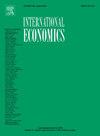Deep-water ports and international trade: A structural gravity estimation
引用次数: 0
Abstract
We investigate the importance of deep-water ports for international trade using a structural gravity model. To avoid confounding port depth effects with the well-known landlocked country penalty in international trade, we focus our inquiry on non-landlocked countries. Using ports data from year 2000 and trade data from 2000–2019, we find that countries with at least one port capable of hosting a Panamax ship (i.e., port depth of at least 41 ft) trade tremendously more manufactured goods than non-landlocked countries without such ports. Ten additional feet of maximum port depth corresponds with 18.3 to 19.8 percent more international trade in manufactured goods and 19.1 to 22.2 percent more trade in all commodities sectors for a non-landlocked country, while it is unrelated to trade in services. For trade in commodities, having more ports at deeper cutoff depths also corresponds with greater trade volumes.
深水港与国际贸易:结构重力估计
我们使用结构重力模型来研究深水港对国际贸易的重要性。为了避免将港口深度效应与国际贸易中众所周知的内陆国家惩罚混淆,我们将调查重点放在非内陆国家。利用2000年的港口数据和2000年至2019年的贸易数据,我们发现,拥有至少一个能够容纳巴拿马型船舶的港口(即港口深度至少为41英尺)的国家,其制成品贸易量远远超过没有此类港口的非内陆国家。对于一个非内陆国家来说,最大港口深度增加10英尺,相当于制成品国际贸易增加18.3%至19.8%,所有大宗商品部门的贸易增加19.1%至22.2%,而这与服务贸易无关。对于大宗商品贸易来说,港口越多,截止深度越深,贸易量也越大。
本文章由计算机程序翻译,如有差异,请以英文原文为准。
求助全文
约1分钟内获得全文
求助全文
来源期刊

International Economics
Economics, Econometrics and Finance-Economics, Econometrics and Finance (all)
CiteScore
6.30
自引率
0.00%
发文量
74
审稿时长
71 days
 求助内容:
求助内容: 应助结果提醒方式:
应助结果提醒方式:


